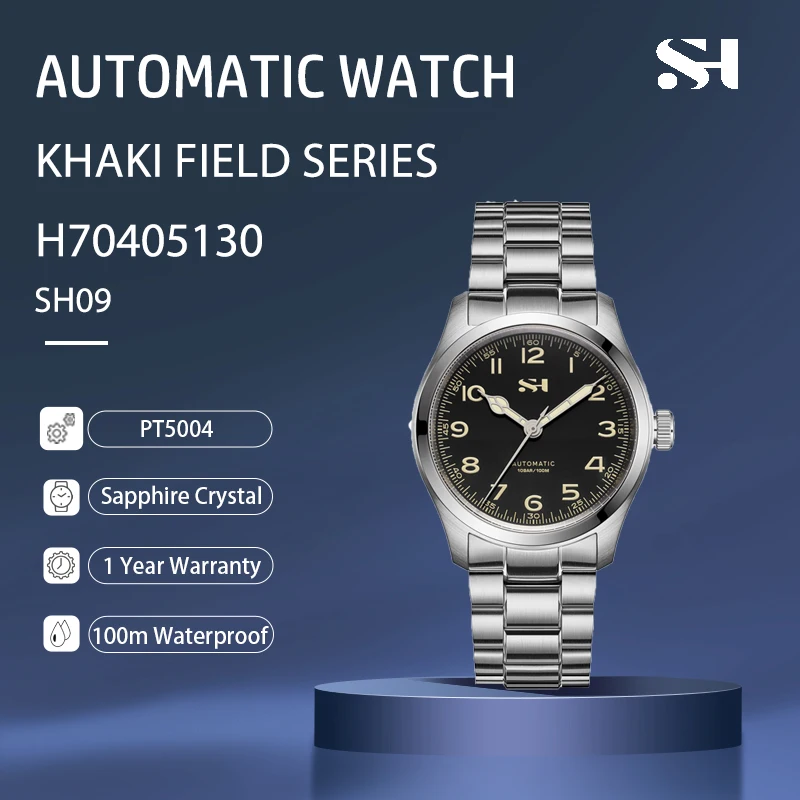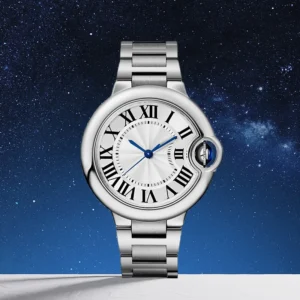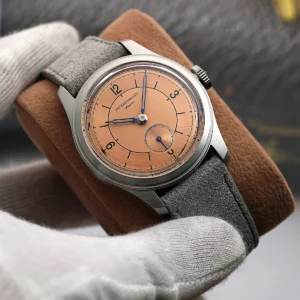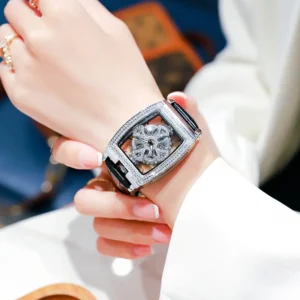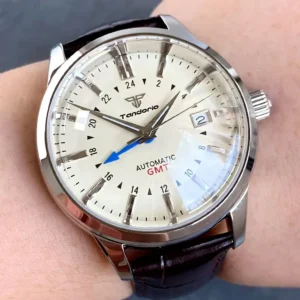The Quest for Incredible Thinness: Understanding Ultra-Thin Watch Engineering
In the rarefied world of high-end watchmaking, few technical achievements command as much respect as the creation of an ultra-thin timepiece. These exceptional watches—typically defined as having cases under 8mm in thickness and movements thinner than 3mm—represent the absolute pinnacle of horological miniaturization.
Ultra-thin watches occupy a special place in the pantheon of watchmaking achievements. Unlike complications that add functions, the ultra-thin watch achieves its distinction through subtraction—removing everything unnecessary while maintaining perfect functionality. This pursuit of thinness isn’t merely aesthetic; it represents one of horology’s greatest engineering challenges.
The creation of these timepieces requires watchmakers to balance two seemingly contradictory goals: achieving extreme thinness while ensuring reliability and durability. Every component must be reconsidered, redesigned, and reduced to its absolute minimum dimensions without compromising functionality.
The world’s thinnest mechanical watches now measure less than 2mm thick—about the thickness of two credit cards stacked together. Achieving such remarkable dimensions requires overcoming numerous technical hurdles that traditional watchmaking techniques simply cannot address. The thin case design principles in modern watches have evolved significantly over decades of innovation.
This delicate balancing act between elegant minimalism and robust engineering behind slim watch movements creates unique challenges that watchmakers must overcome through innovative solutions in materials, manufacturing, and design.
The Historical Pursuit of Slimness in Horology
The quest for thinner watches began long before wristwatches became popular. In the late 18th century, watchmaker Jean-Antoine Lépine revolutionized pocket watch design by eliminating the fusee and creating what became known as the Lépine caliber—a significant step toward thinner timepieces.
As pocket watches transitioned to wristwatches in the early 20th century, the race for thinness accelerated. Early innovations focused on reducing the height of individual components, particularly the mainspring barrel and the balance wheel.
The 1950s to 1970s marked the golden age of ultra-thin development. In 1957, Piaget introduced the revolutionary Caliber 9P, a hand-wound movement measuring just 2mm thick—establishing the brand’s dominance in ultra-thin watchmaking that continues today. Shortly after, in 1960, they unveiled the Caliber 12P, the world’s thinnest automatic movement at just 2.3mm.
Significant milestones in this era included:
- Jaeger-LeCoultre’s Caliber 145 (1.38mm thick, 1907)
- Universal Genève’s Micro-Rotor movement (1955)
- Piaget’s record-setting 9P and 12P calibers (1957/1960)
Recent decades have witnessed a renaissance in ultra-thin watchmaking, with brands like Bulgari joining traditional thin-watch specialists in pushing boundaries. Modern engineering and materials have enabled astonishing achievements like movements under 2mm thick and complete watches under 4mm.
This continued evolution in design evolution of formal watch styles demonstrates how the pursuit of thinness remains one of horology’s most compelling challenges, driving innovation across the industry.
Core Engineering Challenge: Space Management and Miniaturization
The fundamental challenge in creating ultra-thin watches lies in managing severely limited vertical space while maintaining functionality. Standard watch movements typically range from 4-5mm in thickness, while ultra-thin calibers must operate in less than half that space.
This extreme spatial constraint forces engineers to completely reimagine every component. Consider the scale: ultra-thin watch gears can be as thin as 0.12mm (0.004 inches)—thinner than a human hair. At this scale, even a speck of dust becomes a significant obstacle.
Manufacturing tolerances become exponentially more demanding. While standard watch components might be machined to tolerances of 0.05mm, ultra-thin components require precision measured in microns (thousandths of a millimeter). A variance of just 0.01mm (0.0004 inches)—imperceptible to the human eye—can mean the difference between perfect function and complete failure.
This miniaturization challenge extends to every component:
- Mainsprings must be thinner yet maintain adequate power
- Gears must be reduced in height without losing strength
- Bridges must be minimized while still providing structural support
- Balance wheels must be redesigned to oscillate in minimal vertical space
The spatial constraints create a cascading effect of engineering challenges. As components get thinner, they become more susceptible to flexing, more difficult to manufacture, and more challenging to assemble—issues that must be addressed through innovative design solutions that will be explored in the following sections.
Material Science Innovations: Strength Despite Thinness
The extreme thinness of components in ultra-thin watches creates an inherent paradox: parts must be exceptionally thin yet maintain sufficient structural integrity to function reliably for decades. Traditional watchmaking materials often reach their physical limits when reduced to such dimensions.
To overcome these limitations, watchmakers have pioneered advanced materials specifically suited for ultra-thin applications:
- Cobalt-nickel alloys: Offer superior strength-to-weight ratio compared to standard brass
- High-tech titanium alloys: Provide exceptional rigidity while reducing weight
- Carbon composites: Allow for extremely thin yet durable components
- Ceramics: Offer hardness and scratch resistance in minimal dimensions
- Silicon: Used for escapement components due to its lightness and precision
These material innovations directly address the weaknesses inherent in ultra-thin design. For example, silicon’s low mass makes it ideal for oscillating components in minimal spaces, while titanium alloys provide the necessary rigidity for components as thin as 0.2mm.
The selection of case materials becomes equally critical. A watch case that’s too thin might flex when strapped to the wrist, potentially disrupting the movement’s operation. Manufacturers of thin automatic dress watches have pioneered new case materials and construction techniques to prevent this issue.
The intersection of material science and watch engineering continues to evolve, with each breakthrough in materials enabling new possibilities in ultra-thin design. These innovations represent not just improvements in existing approaches but fundamental rethinking of how timepieces can be constructed.
Structural Integrity: Preventing Flexing and Distortion
When a watch case measures just 3-4mm thick, maintaining structural integrity becomes a significant engineering challenge. Without proper reinforcement, ultra-thin cases can flex when strapped to the wrist or when the crown is pulled—potentially misaligning internal components or disrupting timekeeping accuracy.
Watchmakers have developed several innovative approaches to reinforce ultra-thin cases:
- Monocoque construction: Single-piece cases eliminate the need for a separate caseback, adding strength
- Peripheral reinforcement: Strategic strengthening around the perimeter where flexing is most likely
- Honeycomb structures: Internal architectural elements that maximize strength while minimizing weight
- Stepped case designs: Variable thickness that adds support where needed most
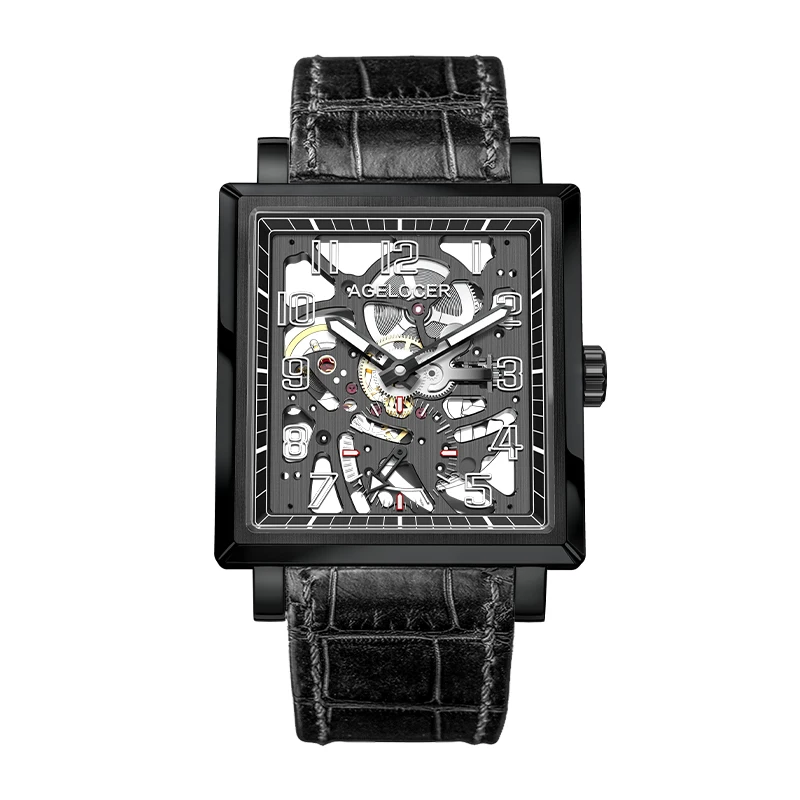
Water resistance presents particular difficulties in ultra-thin cases. Traditional gaskets and seals add unwanted thickness, forcing engineers to develop specialized sealing solutions that maintain protection while adding minimal height. This often results in reduced water resistance ratings compared to standard watches—a necessary trade-off for achieving extreme thinness.
The design principles behind ultra-thin cases stand in stark contrast to those used in engineering behind adventure watch cases, which prioritize robustness and impact protection. Ultra-thin cases must achieve durability through sophisticated design rather than sheer material thickness.
Despite perceptions of fragility, well-engineered ultra-thin watches can be surprisingly durable for everyday wear, though they typically require more careful handling than their thicker counterparts.
Movement Architecture Revolution: Rethinking Traditional Design
Creating ultra-thin movements requires completely reimagining traditional watch architecture. The standard approach of stacking components vertically becomes impossible when every fraction of a millimeter matters.
One revolutionary concept involves integrating the movement directly into the case, using the caseback as the movement’s main plate—effectively eliminating one layer entirely. Brands like Piaget and Bulgari have pioneered this technique to achieve record-breaking thinness.
Automatic winding systems present particular challenges, as conventional central rotors add significant height. Alternative approaches include:
| Winding System | Thickness Impact | Advantages | Disadvantages |
|---|---|---|---|
| Micro-rotor | Moderate | Fully automatic | Less winding efficiency |
| Peripheral rotor | Minimal | Maintains thinness | Complex to manufacture |
| Manual winding | Lowest | Simplest solution | Requires daily winding |
The placement of components often shifts from vertical stacking to horizontal spreading. While this maintains thinness, it requires larger-diameter movements—an acceptable trade-off for achieving minimal height. This approach is particularly evident in many manual wind dress watches where eliminating the automatic winding system allows for slimmer profiles.
Traditional bridges that support movement components are either eliminated entirely or reduced to minimal dimensions. Some manufacturers have created movements where the dial itself becomes a structural component—another example of how ultra-thin design forces complete rethinking of watchmaking conventions.
The Power Reserve Dilemma: Energy Storage in Limited Space
In standard watches, the mainspring barrel—which stores energy to power the watch—typically occupies substantial vertical space. Ultra-thin watches must drastically reduce this height, creating immediate consequences for power reserve.
A thinner mainspring can store significantly less energy, often resulting in power reserves of 40-45 hours in ultra-thin watches compared to 70+ hours in standard modern movements. This limitation creates a direct trade-off between thinness and operational duration.
Watchmakers employ several strategies to maximize energy storage despite these constraints:
- Extended-length mainsprings that compensate for reduced height with greater length
- Multiple thinner mainspring barrels connected in series
- Advanced mainspring alloys that store more energy per unit volume
- Increased efficiency in the gear train to reduce energy consumption
The choice between automatic and manual winding significantly impacts this equation. Manual movements can be thinner but require regular winding, while automatic systems add thickness but offer greater convenience. Some ultra-thin automatic watches make clever use of peripheral or micro-rotors to minimize the added height.
Despite these challenges, some modern ultra-thin watches achieve impressive power reserves of 60+ hours through innovative energy storage solutions—demonstrating that clever engineering can overcome even the most fundamental physical limitations.
Manufacturing Precision: Machining at the Limits of Possibility
Creating components for ultra-thin watches pushes manufacturing capabilities to their absolute limits. Parts must be machined to tolerances measured in microns—a level of precision that requires specialized equipment and exceptional expertise.
Key manufacturing challenges include:
- Machining extremely thin components without warping or distortion
- Maintaining precise tolerances across components measured in hundredths of a millimeter
- Creating surfaces smooth enough to minimize friction between tightly packed parts
- Handling and manipulating components so thin they can be deformed by human touch
These challenges necessitate advanced manufacturing technologies:
- Multi-axis CNC machines with sub-micron precision
- Wire-EDM (Electrical Discharge Machining) for cutting extremely fine components
- Specialized surface treatment techniques to achieve optimal friction properties
- Custom tooling designed specifically for ultra-thin component production
The extreme precision requirements dramatically increase manufacturing costs, as production yields tend to be lower and processing times longer. A single gear wheel in an ultra-thin movement might take 5-10 times longer to produce than its counterpart in a standard watch.
Quality control becomes extraordinarily demanding, requiring specialized measurement tools capable of detecting deviations invisible to the naked eye. This combination of technical difficulty and quality requirements explains much of the premium pricing associated with ultra-thin timepieces.
Assembly Artistry: The Human Factor in Ultra-Thin Watchmaking
While advanced manufacturing technology enables the creation of ultra-thin components, assembling these microscopic parts remains primarily a human endeavor requiring extraordinary skill and patience. Watchmakers specializing in ultra-thin movements need years of additional training beyond standard watchmaking expertise.
The challenges of assembly are numerous:
- Components so delicate they can be damaged by a watchmaker’s breath
- Clearances between moving parts measured in hundredths of a millimeter
- Significantly increased risk of contamination due to tighter tolerances
- Limited space for tools to access and adjust components
Specialized tools help overcome these challenges, including:
- Custom tweezers with extremely fine tips
- Magnification systems providing 10-30× enlargement
- Static-free environments to prevent dust attraction
- Ultra-precise oiling instruments that deliver lubricant in microscopic quantities
What might take minutes in a standard watch often requires hours in an ultra-thin movement. For example, adjusting the endshake (vertical play) of a wheel in a standard movement might take 15 minutes; in an ultra-thin caliber, the same task could require over an hour of painstaking work.
This level of craftsmanship is evident in classic automatic dress watches where the finished product conceals the extraordinary skill required to assemble such refined timepieces.
Complications Within Constraints: Adding Functions Despite Thinness
Creating an ultra-thin simple time-only watch presents enough challenges, but adding complications—additional functions beyond basic timekeeping—exponentially increases the difficulty. Each additional function requires more components in the same limited vertical space.
Consider a perpetual calendar complication, which typically adds 1.5-2mm to a movement’s thickness. Integrating this functionality into an ultra-thin framework requires complete reimagining of how the mechanism works. Rather than stacking calendar components vertically, ultra-thin designs spread them horizontally and use innovative cam systems that operate in minimal vertical space.
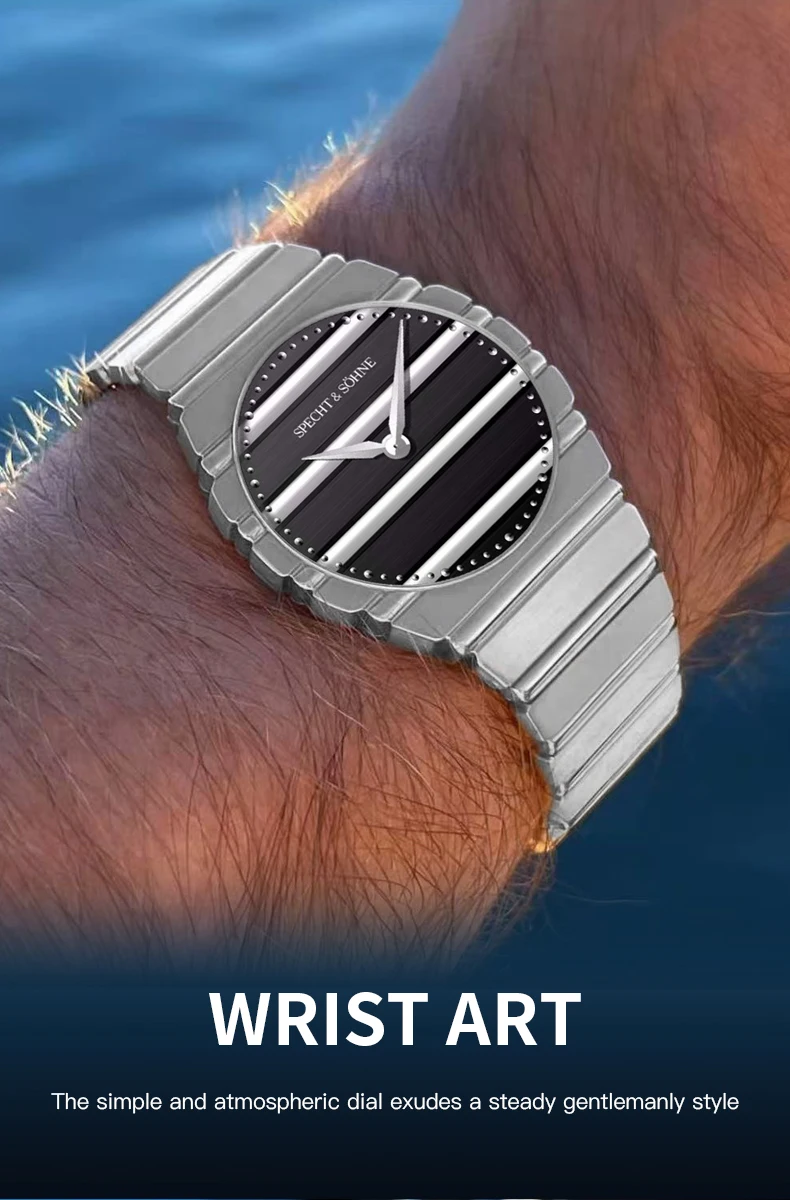
The challenges multiply with each additional function:
- Chronographs require additional gear trains and clutch mechanisms
- Moon phases need display systems and driving mechanisms
- Minute repeaters must incorporate hammers and gongs in minimal space
- Tourbillons must rotate an entire escapement assembly within severe height constraints
Despite these challenges, watchmakers have achieved remarkable feats, such as creating tourbillon watches less than 4mm thick and perpetual calendar mechanisms in movements under 3mm. These achievements showcase the incredible ingenuity that emerges when watchmakers embrace the constraints of the ultra-thin format.
The benefits of slim watch cases extend beyond aesthetics, offering enhanced comfort even when complications are present—provided these complications are engineered specifically for the ultra-thin context.
Brands at the Forefront: Masters of Ultra-Thin Engineering
Several watchmaking houses have established themselves as specialists in ultra-thin horology, each bringing unique approaches and innovations to this challenging discipline.
Piaget has maintained its position as a pioneer in ultra-thin watchmaking since the 1950s. Their approach emphasizes both technical innovation and elegant design, creating watches that set numerous thinness records while remaining visually distinctive. Their Altiplano line exemplifies the marriage of extreme thinness with refined aesthetics.
Bulgari has emerged as a modern ultra-thin specialist with their Octo Finissimo collection, breaking multiple world records through innovative integration of case and movement components. Their distinctive approach uses contemporary materials and architectural concepts to achieve unprecedented thinness.
Jaeger-LeCoultre’s long history in ultra-thin watchmaking is exemplified by their Master Ultra Thin collection, which balances classic design with technical innovation. Their approach emphasizes reliability and wearability alongside impressive thinness.
Audemars Piguet has contributed significantly to ultra-thin development with their Royal Oak Ultra-Thin models, demonstrating how iconic design can be maintained even in extremely slim profiles.
These manufacturers continue to compete for records and recognition, driving further innovation in the field. Their distinctive design languages show that even within the constraints of ultra-thin watchmaking, there remains considerable room for aesthetic expression, as seen in various minimalist dress watches.
Classic Automatic Dress Watches, Day Date Automatic Watches, Perpetual Calendar Automatic Watches
Price range: $540.60 through $574.60 Select options This product has multiple variants. The options may be chosen on the product pageClassic Automatic Dress Watches, GMT Automatic Watches, GMT Pilot Watches
Price range: $1,240.86 through $1,463.33 Select options This product has multiple variants. The options may be chosen on the product pageClassic Automatic Dress Watches, Thin Automatic Dress Watches
$437.64 Select options This product has multiple variants. The options may be chosen on the product pageClassic Manual Wind Watches, Manual Wind Dress Watches
Price range: $425.50 through $462.50 Select options This product has multiple variants. The options may be chosen on the product page- $104.12 Select options This product has multiple variants. The options may be chosen on the product page
Classic Automatic Dress Watches, GMT Automatic Watches, GMT Dive Watches
Price range: $468.93 through $552.94 Select options This product has multiple variants. The options may be chosen on the product page
The Ownership Experience: Practical Considerations for Collectors
Potential owners of ultra-thin watches often have practical questions about these specialized timepieces:
Are ultra-thin watches fragile?
* While thinner than standard watches, well-engineered ultra-thin timepieces are designed for daily wear
* They require more careful handling but aren’t inherently delicate
* Modern materials have significantly improved durability compared to vintage ultra-thins
What maintenance considerations are unique to ultra-thin watches?
* Service intervals are typically similar to standard watches (3-5 years)
* Servicing costs are often higher due to increased complexity
* Finding watchmakers qualified to service ultra-thin movements can be challenging
* Water resistance should be checked more frequently than with thicker watches
How do ultra-thin watches wear compared to standard watches?
* Exceptional comfort, particularly for those with smaller wrists
* Less likely to catch on shirt cuffs or sleeves
* Lighter weight contributes to “forgetting you’re wearing it” comfort
* Often appear more elegant and refined on the wrist
What value proposition do ultra-thin watches offer?
* Technical achievement comparable to high complications
* Often retain value well due to their specialized nature
* Represent significant horological accomplishment
* Offer distinctive elegance not achievable with thicker watches
For many collectors, the appeal of minimalist automatic watches with ultra-thin profiles lies in their understated elegance and the technical mastery they represent—qualities that make them uniquely satisfying to own and wear.
Should You Consider an Ultra-Thin Watch?
Ultra-thin watches offer unique advantages and considerations that may influence your decision:
Pros:
* Unmatched elegance and sophistication
* Superior comfort for all-day wearing
* Easily slides under shirt cuffs
* Represents significant watchmaking achievement
* Often becomes a conversation piece among enthusiasts
* Perfect complement to formal attire
Cons:
* Typically higher price point than comparable standard-thickness watches
* May require more careful handling
* Generally lower water resistance
* Often prioritize thinness over other features
* Limited selection compared to standard watches
* Service can be more specialized and costly
Ultra-thin watches are particularly well-suited to certain collectors and situations. They make excellent formal watches, complementing business attire or evening wear with their sleek profiles. They’re ideal for those who appreciate mechanical refinement and technical achievement over robustness or feature sets.
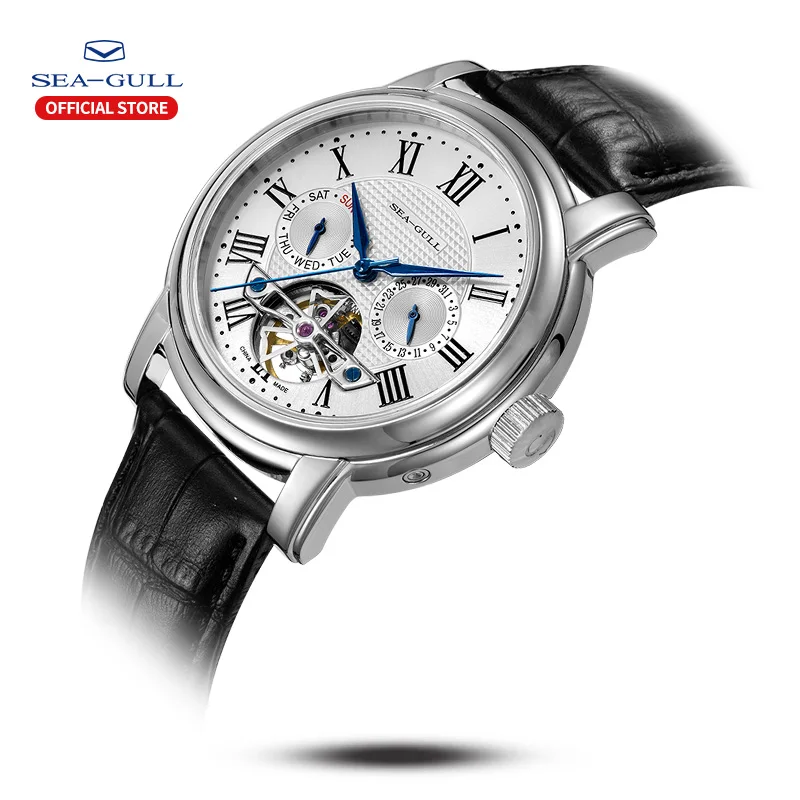
Budget considerations vary widely, from entry-level ultra-thins starting around $1,000 to haute horlogerie pieces exceeding $25,000. The mid-range ($3,000-$8,000) offers numerous excellent options from established manufacturers.
For those intrigued by slimness but concerned about the extreme nature of ultra-thin watches, many manufacturers offer “slim” models that balance thinness with robustness—an excellent middle ground explored in our guide to thin vs thick watch cases profile.
Is There a Limit to How Thin Watches Can Go?
While watchmakers continue to break thinness records, physical and practical limitations do exist. Theoretical minimum thicknesses are constrained by several factors:
The escapement (the mechanism that regulates timekeeping) requires a minimum height to function properly. Even with the most advanced designs, mechanical escapements need vertical space to operate. The balance wheel must oscillate freely, requiring clearance that cannot be eliminated.
Material strength imposes another boundary. As components become extremely thin, they reach the physical limits of even the most advanced materials. A mainspring or gear that’s too thin simply cannot perform its function reliably.
Future innovations may push these boundaries through:
* New materials with superior strength-to-thickness ratios
* Novel escapement designs that operate in less vertical space
* Alternative energy storage systems beyond traditional mainsprings
* Manufacturing techniques that achieve greater precision at microscopic scales
However, a point of diminishing returns emerges as watches approach the 2mm thickness mark. Extreme thinness eventually compromises practicality, with such watches becoming more demonstration pieces than practical timekeepers. This suggests that while records will continue to be broken, the focus may shift toward incorporating more functionality within already impressive thin dimensions.
The modern trends in thin watch profiles indicate continued consumer interest in slim designs, but perhaps with greater emphasis on wearability alongside thinness.
How Does Ultra-Thin Design Contrast With Other Watchmaking Priorities?
Ultra-thin watchmaking represents one extreme on the spectrum of horological achievement, with robust tool watches occupying the opposite end. This contrast illuminates the diverse approaches to watchmaking excellence.
While ultra-thin design prioritizes minimization and refinement, tool watches like dive watches emphasize durability and functionality. A dive watch measuring 15mm thick has added material specifically to withstand pressure and impacts—the exact opposite approach of an ultra-thin watch that eliminates every unnecessary molecule.
Similarly, complicated watches with numerous functions typically embrace vertical space to stack additional mechanisms. A grand complication might contain hundreds more components than an ultra-thin watch, using its greater volume to house these additional functions.
These contrasting approaches appeal to different collector preferences:
* Ultra-thin watches attract those who value elegant minimalism
* Tool watches appeal to those prioritizing robustness and functionality
* Complicated watches draw collectors interested in mechanical ingenuity
Many enthusiasts appreciate multiple types, recognizing that each represents a different expression of watchmaking excellence. A well-rounded collection might include automatic dress watches of varying thicknesses alongside sportier options.
The beauty of fine watchmaking lies in this diversity—each approach requires its own expertise, presents unique challenges, and achieves excellence through different means. Whether celebrating the achievement of fitting a complete mechanical movement in 2mm or creating a watch that functions 300 meters underwater, both represent remarkable feats of engineering and craftsmanship.

